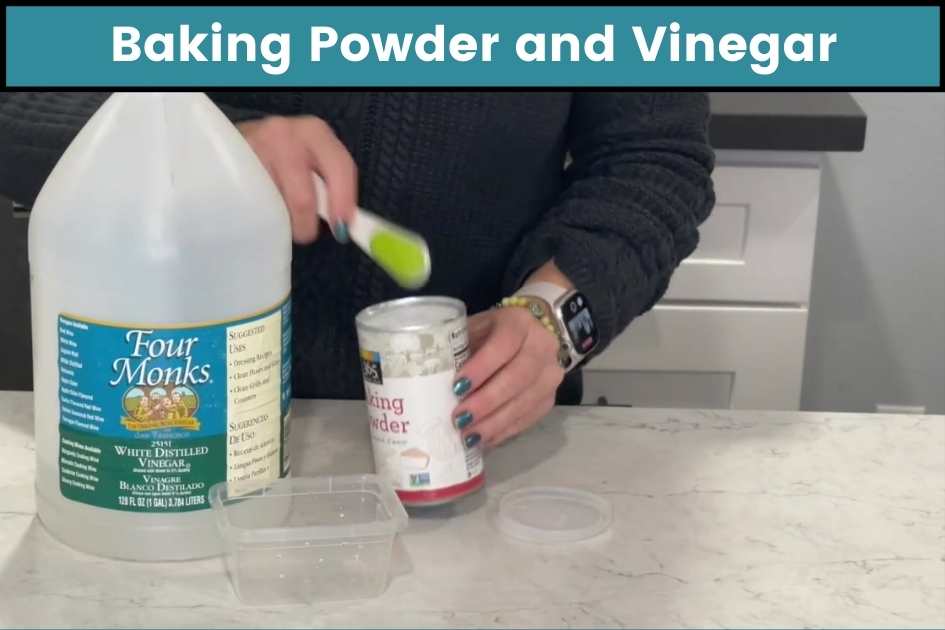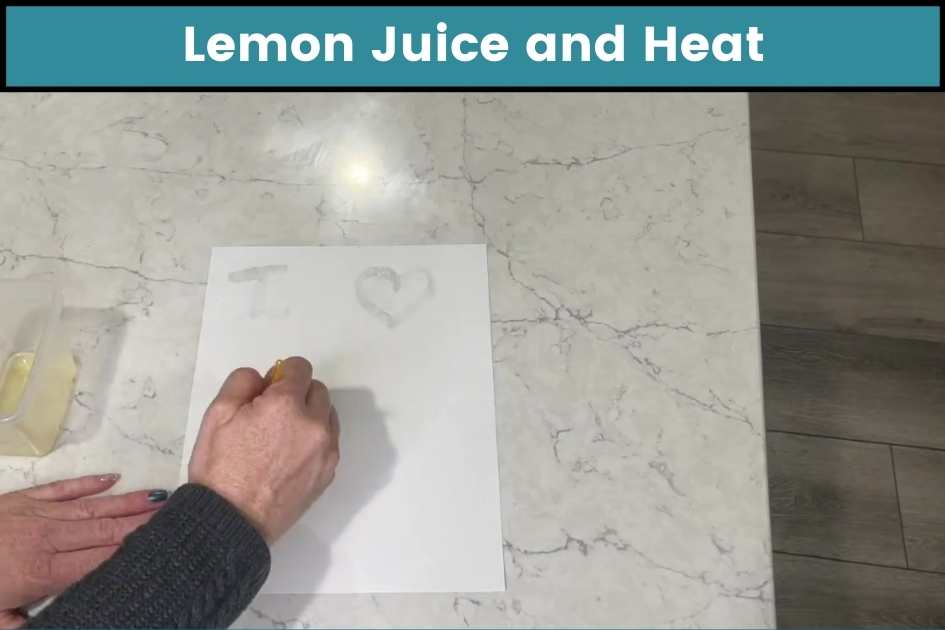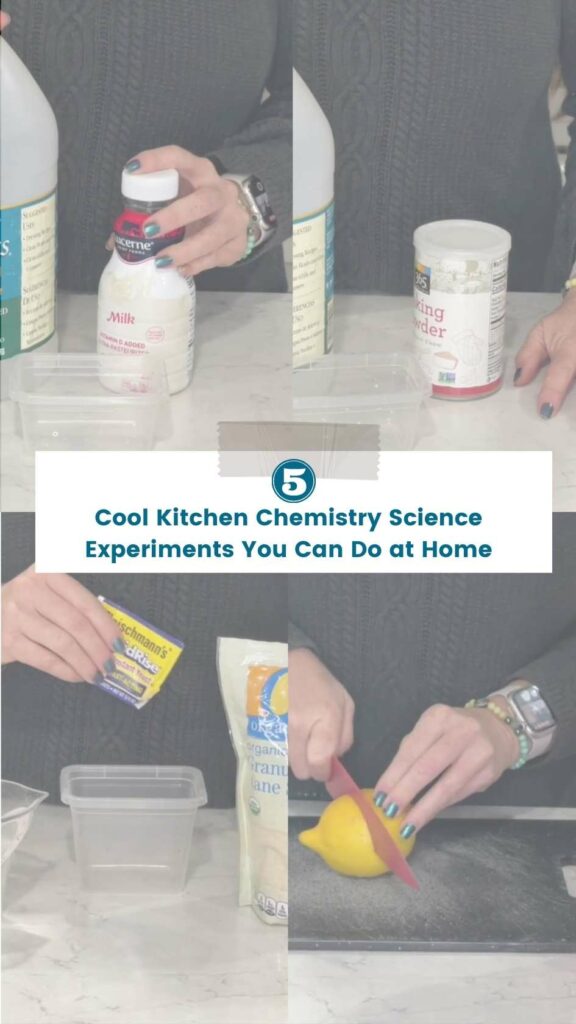We’ve all done the baking soda and vinegar volcano at home. But did you know that there are other ingredients located in your kitchen that are perfect for doing cool chemistry science experiments? Check out the different experiments you can do right at home and get your kids loving science.

#1 Baking Powder and Vinegar Make For Some Fun Kitchen Chemistry
This experiment is very similar to baking soda and vinegar. However, instead of using baking soda, you use baking powder. Take 1 tablespoon of baking powder and add 1/4 cup of vinegar. Baking powder is also known as sodium hydrogencarbonate. When it combines with vinegar, otherwise known as acetic acid, carbon dioxide gas is released. Chemical equation of this reaction is NaHCO3(aq) + HC2H3O2(aq) → CO2(g) + H2O(l) + NaC2H3O2(aq).

#2 Milk and Vinegar mix to make plastic
Did you know you can make your own type of plastic at home? I’m not talking about the type of plastic used to make your water bottles or grocery bags; this is casein plastic. To make this plastic, you need milk and vinegar. I used whole milk, which has more casein. For every 1/4 cup of milk, you use 1 tablespoon of vinegar. You will need to warm the milk. I used 1/4 cup of milk and put it in the microwave for 20-30 seconds. It doesn’t need to boil; just get warm. I then added 1 tablespoon of vinegar and stirred for 1 minute. You should see the milk start to curdle. These curdle are the casein that can be used in some plastics. Next, strain the milk to remove the excess fluid and just keep the casein. Dry it with a paper towel and mold it into any shape you want. Let it dry for at least 48 hours, and then you can paint your plastic creation.

#3 Mixing yeast, sugar, and water to create a chemical change
If you have any flour, olive oil, and salt nearby, you might want to get them ready so that you can create some homemade pizza dough after you have fun with this chemical change. For this experiment, you will need one packet of yeast, 1 1/2 teaspoons of sugar, and 3/4 cups of warm water. Make sure the water is warm, not hot. Hot water will kill the yeast. Add the sugar and yeast together, and then add the warm water. The water is a catalyst to help the sugar and yeast react together. You should see carbon dioxide gas being produced in the form of bubbles.
If you want to turn this creation into pizza dough, just add your yeast combination to 1 cup of flour, 2 tablespoons of olive oil, and 3/4 teaspoons of salt. Mix together and add another 1 1/3 cups of flour as needed until the dough pulls away from the sides. Leave the dough in an oil-coated bowl for 30 minutes so that the dough can rise and double in size. Then roll the dough out, put on your toppings and bake at 425 degrees for 10-15 minutes.
#4 Lemon Juice mixed with Baking Soda
This experiment will give you the same reaction as mixing baking soda and vinegar. However, instead of using vinegar as the acid, you use lemon juice which smells a lot nicer. Just take 1/2 a tablespoon of lemon juice and mix it with 1/2 a tablespoon of baking soda. The chemical reaction is citric acid (lemon juice) + sodium bicarbonate (baking soda) yields carbon dioxide gas and sodium citric (a salt).

#5 Mystery Message Using Lemon Juice and Heat
Wouldn’t it be cool to be able to write a secret message that only the person intended to see it can view it? Now you can. All it takes is some lemon juice and heat. Use lemon juice and a paintbrush to write a secret message on a piece of paper. Let the paper dry. When it is dry, the message disappears. To make it reappear, you will just need to add heat. A blow dryer will work for this. The heat causes the lemon juice to caramelize, making it appear.

Chemistry can be a lot of fun and doesn’t require a lot of chemicals. If you loved these experiments you might also be interested in my blog post about writing claim, evidence, and reasoning paragraphs in chemistry.






